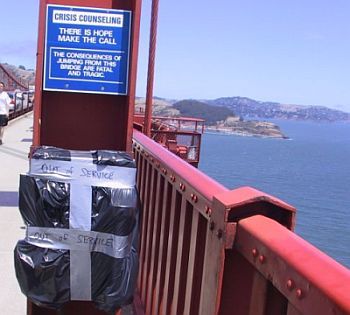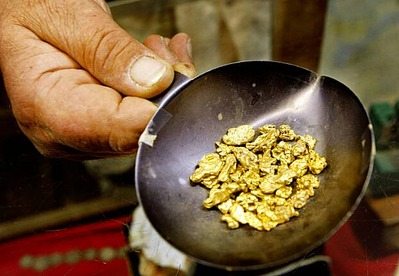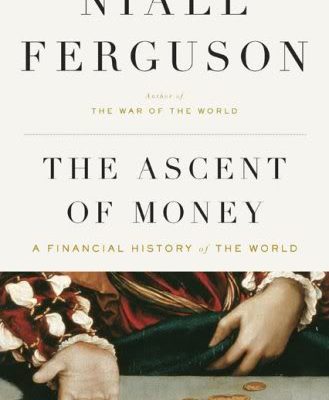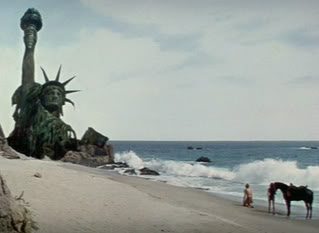
A number of readers have asked me why I?m not trading now. Since I put out my calls to sell Treasury bonds in August (click here for ?The Great Treasury Bond Crash of 2010? ), and buy US stocks in September (click here for ?My Equity Scenario for the Rest of 2010? ), I have mostly been sitting on my hands. I usually try to catch three or four trend changes a year, which might generate 50-100 trades, and often come in frenzied bursts.
Since I am one of the greatest tightwads that ever walked the planet, I only like to buy positions when we are at the height of despair and despondency, and traders are raining off the Golden Gate Bridge. Similarly, I only like to sell when the markets are tripping on steroids and ecstasy, and are convinced that they can live forever.
Some 99% of the time, the markets are in the middle, and there is nothing to do but deep research, looking for the next trade. That is the purpose of this letter. Over the four decades that I have been trading, I have learned a number of tried and true rules which have saved my bacon countless times. I will share them with you.
1) Don?t over trade. This is the number one reason why individual investors lose money. Look at your trades of the past year and apply the 90/10 rule. Dump the least profitable 90% and watch your performance skyrocket. Then aim for that 10%. Over trading is a great early retirement plan for your broker, not you.
2) Always use stops. Risk control is the measure of the good hedge fund trader. If you lose all your capital on the lemons, you can?t play when the great trades set up. Consider cash as having an option value.
3) Don?t forget to sell. Date, don?t marry you positions. Remember, pigs get slaughtered. Always leave the last 10% of a move for the next guy.
4) You don?t have to be a genius to play this game. If that was required, Wall Street would have run out of players a long time ago. If you employ risk control and stops, then you can be wrong 40% of the time, and still make a living. That?s little better than a coin toss. It you are wrong only 30% of the time, you can make millions. If you are wrong a scant 20% of the time, you are heading a trading desk at Goldman Sachs. If you are wrong a scant 10% of the time, you are running a $20 billion hedge fund that the public only hears about when you pay $100 million for a pickled shark at a modern art auction. If someone says they are never wrong, as is often claimed on the Internet, run a mile, because it is impossible.
5) This is hard work. Trading attracts a lot of wide eyed, na?ve, but lazy people because it appears so easy from the outside. You buy a stock, watch it go up, and make money. How hard is that? The reality is that successful investing requires twice as much work as a normal job. The more research you put into a trade, the more comfortable you will become, and the more profitable it will be. That?s what this letter is for.
6) Don?t chase the market. If you do, it will turn back and bite you. Wait for it to come to you. If your miss the train, there will be another one along in hours, days, weeks, or months. Patience is a virtue.
7) When I put on a position, I calculate how much I am willing to lose to keep it. I then put a stop just below there. If I get triggered, I just walk away. Only enter a trade when the risk/reward is in your favor. You can start at 3:1. That means only risk a dollar to potentially make three.
8) Don?t confuse a bull market with brilliance. I am not smart, just old as dirt.
9) Tape this quote from the great economist and early hedge fund trader of the thirties, John Maynard Keynes, to you computer monitor: "Markets can remain illogical longer than you can remain solvent." Hang around long enough, and you will see this proven time and again (ten year Treasuries at 2.4%?!).
10) Don?t believe the media. I know, I used to be one of them. Look for the hard data, the numbers, and you?ll see that often the talking heads, the paid industry apologists, and politicians don?t know what they are talking about (the Gulf oil spill will create a dead zone for decades?).
11) When you are running a long/short portfolio, 80% of your time is spent managing the shorts. If you don?t want to do the work, then cash beats a short any day of the week.
12) Sometimes the conventional wisdom is right.
13) Invest like a fundamentalist, execute like a technical analyst.
14) Use technical analysis only and you will buy every rally, sell every dip, and end up broke. That said, learn what an ?outside reversal? is, and who the hell is Leonardo Fibonacci.
15) The simpler a market approach, the better it works. Everyone talks about ?buy low and sell high?, but few actually do it. All black boxes eventually blow up, if they were ever there in the first place.
16) Markets are made up of people. Understand and anticipate how they think, and you will make a lot of money.
17) Understand what information is in the market and what isn?t and you will make more money.
18) Do the hard trade, the one that everyone tells you that you are ?Mad? to do. If you add a position and then throw up afterwards, then you know you?ve done the right thing. This is why people started calling me ?Mad? 40 years ago.
19) If you are trying to get out of a hole, the first thing to do is quit digging and throw away the shovel. A blank position sheet can be invigorating.
20) Making money in the market is an unnatural act. We humans are predators and hunters evolved to track game on the horizon of an African savanna. Modern humans are maybe 5 million years old, but civilization has been around for only 10,000 years. Our brains have not had time to make the adjustment. In the market, this means that if a stock has gone up, you believe it will continue. This is why market tops and bottoms see volume spikes. To make money, you have to go against these innate instincts. Some people are born with this ability, while others can only learn it through decades of training. I am in the latter group.
Great Hunter, Lousy Trader
The gold rush is back on in California. On my way back from Lake Tahoe recently, I saw that every bend of the American river was dotted with hopeful amateur miners, looking to make a windfall fortune.
Weekend hobbyists were there panning away from the banks, while the hardcore pros stood in hip waders balancing portable pumps on truck inner tubes, pouring sand into sluice boxes. A sharp-eyed veteran can take in $2,000 worth of gold dust a day. The new 2012?ers were driven by a price of gold at $1,700 and the attendant headlines, but also by unemployment, and recent heavy rains last winter that flushed huge new quantities of the yellow metal out of the High Sierras.
They were no doubt inspired by the chance discovery of an 8.7 ounce nugget in May near Bakersfield, worth an impressive $10,000. Local folklore says that The Sierra?s have given up only 20% of their gold, and the remaining 80% is still up there awaiting discovery. Out of work construction workers are taking their heavy equipment up to the mountains and using it to reopen mines that have been abandoned since the 19th century.
The U.S. Bureau of Land Management says that mining permits in the Golden State this year have shot up from 15,606 to 23,974. Unfortunately, the big money here is being made by the sellers of supplies and services to the new miners, much as Levi Strauss and Wells Fargo did in the original 1849 gold rush. Of course, they could much more easily buy the Spider Gold Trust Shares ETF (GLD), but it wouldn?t be as much fun.
Nice to Meet You
I have just finished reading the best financial book ever, and I have read most of them. It is The Ascent of Money: A Financial History of the World by Harvard professor Niall Ferguson. It gives you a great explanation of how the broad sweep of history delivered us to the doorstep of today?s crisis.
Ferguson starts with an ancient accounting system written on clay tablets in Mesopotamia 5,000 years ago, and then takes us through the economic dominance of Greece and Rome. We learn about a medieval Italian diplomat named Fibonacci, who imported advanced mathematical concepts from the Middle East, which we still trade around today. He plots the rise of the great banking dynasties, such as the Medici?s and the Rothschild?s (Jacob was my neighbor in London).
It is also a pot boiling narrative of the great financial scandals, starting with the Mississippi bubble which wrecked France, the South Sea bubble where Sir Isaac Newton lost his shirt, to the Ponzi schemes of the 20th century. The story tells us how the financial center of the world has migrated from Babylon to Cairo, Rome, Venice, Amsterdam, London, and eventually ending up in a hedge fund dominated New York.
Ferguson is particularly astute in explaining in layman?s terms the borrowing binge and the exotic, super leveraged derivatives that lead to the current crash. The author finishes with an explanation of how American overconsumption is financed by Chinese saving, and why this can?t last. If you are looking for a single tome which ties it all together, this is it. To obtain preferential pricing in the purchase of this book, please click here.
Those who have been dying of boredom during August -- the lowest volume, tightest ranging month in many years -- may be about to get their respite. September 12 (or Wednesday next week) offers a potential cornucopia of either fantastically good or terribly bad news, and maybe both.
Let me give you a program of the upcoming events on this momentous day:
*The German Supreme Court renders its decision on the legality of the country?s bailout of troubled southern Europe. If they approve, as expected, the Euro should rally to a new multi-month high, possibly as high as $1.29, triggering a global ?RISK ON? move. If they don?t, then the beleaguered continental currency craters very quickly back to $1.20, from whence it came.
*The Federal Reserve Open Market Committee meets, which may finally give us the good news on QE3. If they deliver, markets will gap up. If they don?t, then everyone will assume that quantitative easing at the next meeting is a sure thing and the markets will go to sleep until then. Personally, I don?t think the Fed will act until the Dow drops below 10,000 and puts the fear of God into everyone. This is the day when we find out how real the ?Bernanke/Draghi Put? is.
*Apple releases the iPhone 5, which will become the greatest consumer electronics release in history, and possibly the most expensive. It turns that that all those leaks I was receiving about timing, price, and performance were correct. This should cause the stock to blast through $700, which is why it is my largest position, with a 35% weighting in my model portfolio. But we may not get much more action than that for the short term. The iPhone 5 launch is what the last $160 point move up since the end of May has been all about.
*The next biweekly Mad Hedge Fund Trader global strategy webinar takes place. Yikes! Whose idea was this? This timing is as bad as scheduling the Republican National Convention in Florida in the middle of the hurricane season. I may have to ask listeners to update me on prices while my broadcast is in progress, as I can?t tie up too much bandwidth with price feeds without crashing the program.
If you net out all the likely outcomes of the above, it is market positive. But surprises will have an outsized downside market impact. Whatever the case, life is about to become much more interesting.
How Real is the ?Bernanke/Draghi Put??
Following Howard Ruff for the last 35 years has always been eye opening, if not entertaining. The irascible Mormon is the publisher of Ruff Times ( http://www.rufftimes.com? ), one of the oldest investment letters in the business, and one of the original worshipers of hard assets.
The great thing about the end of the world crowd is that all of their trades are going gangbusters now and we?re all still here. Talk about a win-win! He says that any investment denominated in dollars is a mistake, which is in a long term down trend, along with all paper assets. Silver (SLV) is his first choice, which will outperform gold, and eventually top $100 from the current $27. His personal target for the barbarous relic (GLD) is $2,300, but that might prove conservative.
With the Chinese building 100 nuclear power plants over the next ten years, uranium (CCJ) has great potential. Equities may never come back from their lost decade. Don?t buy ETF?s because they are just another form of paper, and may not actually own the gold or silver they claim. The government is laying the foundation for a massive inflation, which will begin soon.
Howard has long been considered card-carrying member of the lunatic fringe of the investment world, sticking with hard assets throughout their 20 year bear market during the eighties and nineties, and annually predicting the demise of the federal government. Maybe it?s a case of a broken clock being right twice a day, but in recent years I find myself agreeing with Howard more and more. Whether that means I?m now a lunatic too, only time will tell.
When I was remodeling my 160-year-old London house, the chimney was in desperate need of attention. After the bricklayer crawled up the fireplace, he found a yellowed and somewhat singed envelope addressed to Santa Claus. Thinking it was placed there by my kids, he handed it over to me. In it was a letter dated Christmas, 1910 asking for a Red Indian suit.
Europeans have long had a fascination with our Native Americans. So in preparation for my upcoming European strategy luncheon tour I thought I would get myself up to date about out earliest North American residents.
Business is booming on Indian reservations these days, or it isn?t, depending on where they live. Of the country?s 565 reservations, some 239 have moved into the casino business and the cash flow has followed. In 2010, Indian gaming reaped some $26.7 billion in revenues, or some $9,275 per indigenous native. That is a stunning 44% of America?s total casino revenues.
Some, like the Pequot tribe?s massive Foxwood operation just two hours from New York City, now the world?s largest casino, once had money raining down upon it. But the casino grew so large that it entirely occupied the diminutive Connecticut reservation allocated to it by an obscure 17th century.
During the salad days, the profits were so enormous that an annual $250,000 stipend was paid to each officially registered tribal member. A poker boom helped. No surprise that the tribe grew from 167 to 665 members during the last 30 years. Today, the operation is burdened with $2.5 billion in debt, thanks to some bad investments and an ill-timed expansion.
Casinos in more rural locations in the far west distant from population centers have fared less well. Those that contracted out for professional management from Las Vegas and Atlantic City firms, like Harrah?s, MGM, and Caesars, earn a modest living. But the reservations attempting local management on their own fall victim to inefficiencies, incompetence, corruption, over hiring of locals, and outright theft. Believe it or not, it is possible to lose money in the casino business, and some have had to shut down.
Overbuilding is another problem. It Northern New Mexico you can find several casinos within five miles of each other competing for the same customer. Most of their clients (real losers) are in fact local tribal members, the same individuals these houses are intended to help.
The 326 tribes that avoided the casino industry do so at the cost of a big hit to their standard of living. That explains why Native American median household income reaches only $35,062, compared to $50,046 for the US as a whole. Many, like the numerous Hopi, shun it because of their religion.
Without gambling there are few economic opportunities on the reservations. The parched conditions of the west limit farming. Unemployment runs as high as 80% on some reservations, such as the White Mountain Apaches. As a result, a high proportion of the country?s 2.9 million Native Americans are wards of the federal government, living on food stamps and other government handouts.
That?s not how it was supposed to be. The first modern reservation was set up for the Navajo tribe in 1851 at a baking hell hole on the Pecos River, with the intention of enforcing a primitive form of apartheid to insure their survival. Today, they are the most populous tribe, with 160,000, owning the largest reservation, at 24,000 square miles, mostly in Arizona.
Those who signed treaties early survived, which gave them status as an independent nation, but ceded all matters regarding defense to the federal government. In fact the Iroquois, Sioux, and the Chippewa separately declared war on Germany during WWII. Some even issue their own passports. Those that didn?t had to settle for much smaller reservations, or got wiped out.
In 1975, congress passed the Indian Self-Determination Act, which devolved power from the government to the tribes. Florida?s Seminole tribe won the right to open a casino in court in 1981, which was confirmed by the Supreme Court in 1987. After that, it was off to the races with Indian bingo parlors sprouting across the country.
During the 19th century Indian wars when hundreds of thousands died, the practice was to attack a wagon train, kill all the men, marry the women, and adopt the children. As a result, I am descended from three different tribes, the Delaware, Sioux, and the Cherokee, as are about a quarter of native Californians my age. So I tried to cash in on government largess by applying for tribal scholarships to go to college.
It was to no avail. Only those who can trace their lineage to a 1941Bureau of Indian Affairs census and are one eighth Native American can qualify. When whites married Indians 150 years ago, the?? common practice was to baptize them and give western names, making their origins untraceable. They were also pretty casual with marriage records in the Wild West. But we still have many of the wedding photos and know who they are.
I never did find out if that little boy got his Red Indian suit for Christmas, but I hope he did.
So, Should I Double Down?
Here?s a chart that you don?t see very often, the one for iron ore priced in U.S. dollars. I?m sure that every miner working at BHP?s pits in the Australian outback goes to sleep with a print out of this chart clutched close to his chest. You can?t blame him, as his livelihood depends on it, and it has had a definite southerly tilt for the last two years, losing some 50% from the top.
The reasons are known by all. As Chinese growth downshifts from a torrid 13% annual rate to 7% now and possibly zero next year, the demand for Australia?s largest export has been evaporating like an ice cube in the western deserts. (BHP) has already cancelled one high profile project. There is news of contract defaults with Chinese buyers. Steel plants in the Middle Kingdom are seeing actual shutdowns.
As this is the world?s second largest bilateral trade after America?s oil imports from the Middle East, it offers a valuable window on the health of the global economy. And the patient currently has a bad case of the flu which may develop into a fatal case of pneumonia.
Now contrast this chart with the one for the S&P 500 (SPX), which couldn?t be more different. It has been in an uptrend for the past four years, has doubled off its 2009 low, and is on the verge of drifting up to four-year highs on no volume.
What gives? What we are seeing here is a classic war between the fundamentals and liquidity, and liquidity is winning. You would think that with the rest of the world headed for, or already in, recession, the market would be going to hell in a hand basket. Not so. Ben Bernanke and his central banker friends around the world have orchestrated a crescendo of printing presses that have kept the hopium coming and stock prices rising.
This leads me back to my headline, is ?RISK ON?/?RISK OFF? broken? It would certainly seem so as long as the Federal Reserve is keeping the pedal to the metal. So paper assets, like stocks and bonds, are enjoying their glory days. At the same time, any hard assets, especially those most consumed by China, like copper, iron, ore, sugar, zinc, Caterpillar (CAT) and Freeport McMoRan (FCX), are being beaten like the proverbial red-headed stepchild.
Gold (GLD) is getting a free pass from this punishment, as quantitative easing and the dollar devaluation it assures brings in lots of buyers. Oil (USO) is going up for all the usual geopolitical reasons, including Iran, Syria, Libya, and Hurricane Isaac.
So what?s a trader to do? For a start, it means you have to work harder. Making money is no longer a simple flip of the ?ON?/?OFF? switch. We now have to carefully analyze each asset class, industrial sector, and individual company looking to buy the cheapest ones and sell short the expensive ones against them.
Remember, while people have been bitching about falling volatility and low index returns, Apple (AAPL), my largest position, has soared by 70%. It?s not like this one was hard to find either. If fact, I can see their headquarters from my office window right now, while my iMac, iPad, iPhone 4s, and Airbook are charging.
Of course, there is one way to duck the new, heavy workload, and that is to leave all the heavy lifting to me. Making money in tough conditions like this is something that I thrive on. For the first time, I have sent out more trade alerts than newsletters this month, and the model portfolio has been up almost every day for four months.
Remember, the answer to all questions is to buy my newsletter.
Buy to Cover the Short position in the (TLT) September $116-$111 put spread at $0.07 or best
Closing Trade
8-28-2012 ? 11:30 AM EST
expiration date: 9-21-2012
Portfolio weighting: 5%on a delta basis
($5,000/100/$0.07) = 25 Contracts
Eight days ago, I was dead-on correct in predicting that a risk reversal in the markets was imminent, and the Treasury bond market was ripe for at least a five point rally. Well, I lied. Instead we got a six points rally which has taken the value of our short position in the (TLT) September $116-$111 put spread from $0.37 to only $0.07, a drop of 81%.
The original 12 point collapse in the (TLT) was caused by comments made by European Central Bank President, Mario Draghi, who in July, said that he would do ?whatever it takes? to save the Euro. It was one of the easiest bets of the year that Mr. Mario would not follow up his words with action, especially during August, when the entire European leadership was taking their annual six week vacation on the Isle of Sylt, the South of France, or at Bognor Regis. Reminder to newbies and beginners: making money is not always this easy.
It is a no brainer to take profits here. Yields have plummeted from a high of 1.92% down to 1.63% in a mere eight days. We are now dead in the middle of the three month trading range for the (TLT). We get to come out three days before Ben Bernanke gives his Jackson Hole speech which could rile the financial markets. We also get to duck the coming weekend when Mario Draghi is prone to antics of the quantitative easing variety.
By coming out here, you also free up margin to do more interesting things in gold, silver, the Japanese yen, the Russell 2000, the S&P 500, and Apple. On top of all that, we have squeezed out the bulk of the profit on this position in just eight days. It is not worth it to hang on until September 21 only for 17 more basis points. The world could end by then. The risk/reward ratio is no longer favorable. Remember: hogs get fed, pigs get slaughtered.
The better way to play this move would have been to buy outright calls or call spreads on the (TLT), which would have added a hefty 5% to our year-to-date performance. But the melt up happened so fast, it was hard to pick a good entry point.
The profit on this trade is $0.37 - $0.07 = $0.30
That adds (25 X 100 X $0.30) = $750, or 0.75% to? the notional $100,000 portfolio.
To execute this trade:
Buy to cover the September, 2012 (TLT) $116 puts at..$0.11
Sell the September, 2012 (TLT) $111 puts at????.$0.04
Net Cost to cover:???????.?.??????...$0.07
Enter this trade as a single day limit order for the entire spread, not the individual legs. If you don?t get done, work your limit up a penny at a time. Your options trading platform should allow this. That keeps you from paying a double spread.
I am happy to report that this is the 14th consecutive profitable closing trade alert. If you add the 8 unrealized profitable trades still on the books, this takes my current run to 22 money-making ideas in a row.
Well, it?s back to my workout. I want to wear my Speedo with pride next summer on the Italian Riviera. On to the next one.
If you wish to receive trade alerts like this on a real time, instantaneous basis, please subscribe to my Trade Alert Service by clicking here .
Thank you Mr. Mario
I can?t tell you how many times I have received a call from the Joint Chiefs of Staff asking ?if country ?A? attacks country ?B? what is the effect on country ?Q? and ?Z?? After all, there is a pretty short list of those monitoring the global macro economy for 40 years with direct experience in the Middle East since 1968. So when I saw the 703 area code for the Pentagon light up on my caller ID, I thought ?Who is it this time??
It was the office of Army Chief of Staff, General Ray Odierno, calling, wondering if I would be free for lunch that day in San Francisco. The General had expressed interest in my recent piece, ?The Declining America Myth? and wished to explore my ideas further (click here for the link). General Odierno is the commander of the most effective fighting force in the history of warfare and has access to massive intelligence resources, so I thought I?d pick up some information useful to my readers.
Then I thought, ?Yikes!? I was already committed to some speaking engagements at the San Francisco Money Show that day. But duty calls. So a quick call to the organizer and my friend, Charles Githler, and I was able to roll over everything to the next day. That was fine, as long as I didn?t mind giving four speeches and doing three TV interviews in one day.
Hours later, I was briskly walking up Sutter Street to the Marines? Memorial Club. For good measure, I stopped at a barber shop and cut off all my hair. I have learned over the years that the more you look like someone, the more likely they are to confide in you. So it was ?number two buzz cut? here we come. The unexpected dividend of the move was that there was a definite upsurge in interest from the ladies, now that all the white hair was gone and I looked ten years younger.
When I saw the grey GM Suburbans out front and the attendant armed bodyguards, I knew he was early. General Odierno is a thickset man with a handshake like a vice grip. The hash marks practically made it up to his elbow. His uniform displayed a chest full of campaign ribbons and awards. His epaulettes displayed the four starts of a general. But I also noticed that he lacked the ones for Vietnam, his first action coming with Desert Storm. I must be getting old, I thought. Note to readers: much of what we discussed was classified and this piece has been cleared by Army censors.
The general was spending a few hours in the city on his way to visit Larry Paige and Sergei Brin at Google headquarters in nearby Mountain View. There he hoped to learn of the strategic value of the company?s newest online tools. Technology is now developing so fast that it is a challenge for the military to integrate it in to operations fast enough to have an immediate impact. In the aftermath of the Arab Spring, Facebook is now seen as being worth 10 divisions.
The present size of the army is 490,000, down from 1 million at the end of the Vietnam War. Plans are to reduce the force by 80,000 over the next decade, partly made possible by the withdrawal of troops from Iraq and Afghanistan. The goal is to offset this decline with stepped up training and education of the remaining soldiers to accept greater responsibilities. The challenge is to achieve this without ?hollowing out? our forces.
The Joint chiefs are well aware of the fiscal and deficit problems plaguing the US. During the Cold War, the base defense budget peaked at $400 billion, fell to 310 billion by 2001, and ratcheted back up to $510 billion after 9/11. Spending for Iraq and Afghanistan are separately appropriated funds that go on top of this. The target is to lower this to $489 billion over the next ten years. Manpower accounts for 50% of the defense budget, and the cost per soldier has doubled since 2000, making it far and away the biggest cost driver. If budget sequestration comes into force after November ?it will be difficult for the Army to accomplish its mission.?
Odierno says that the Army has made ?incredible progress? training local forces in Afghanistan.
The recent upsurge in suicide bombings and ?insider? attacks prove that the Taliban is losing and is being forced to retreat from the field. This should enable a cut in our forces there from 80,000 to 50,000 by 2014, reducing their role to counter-terrorism and training. While the drone attacks in Pakistan were controversial, they were bringing results, and a major part of the Taliban leadership has been wiped out.
He was optimistic about the future of Iraq. The country is expected to increase oil production from 3 million barrels a day to 5 million, making it the world?s fourth largest producer. If they share the wealth they can look forward to a more stable future. If they don?t, then the internal strife will continue. He wouldn?t get into whether it was a good idea to invade Iraq or not. But removing Saddam Hussein from the global stage has been good news for everyone, especially the Iraqis themselves.
Regarding Syria, Odierno said that he had prepared a list of options for President Obama, and it was up to him to decide what to do. It starts with the existing humanitarian aid and escalates in intensity from there. Next on the list is the enforcement of a ?no fly? zone. I asked why we didn?t just supply the rebels with hand held ?stinger? ground to air missiles, as we did in Afghanistan 25 years ago, with great success. He said it is unclear who the rebels really are and what they represent.
We know that Al Qaida is certainly on the ground in Syria, as foreign fighters account for 10% of the rebel force. The concern is that terrorists could get their hands on these missiles and use them against our own civilian airliners. Odierno chose his words very carefully, as if gingerly stepping through a minefield. Past experience tells me this means that action is imminent.
The general indicated that the Army was making a substantial investment in cyberwarfare. This goes far beyond simple antivirus protection and now includes protection of American financial and industrial networks. It also includes offensive capability. The next war may not start with flying bullets, but with a volley of pernicious computer files that disable enemy communications networks, military, and industrial facilities.
There are hints that this is already underway against Iran, which recently sustained serious damage to its nuclear program from the Israeli ?stuxnet? virus. One of his aides suggested that we now have the ability to ?fry? a country in ten minutes.
I asked the general about the upsurge in army suicides, which are now occurring in record numbers. He said that it was a reflection of American society as a whole, which is seeing a nationwide increase in suicide rates. These are not the fallout from post-traumatic stress, because over half of the deaths have been by soldiers who have never seen combat. The Army is now conducting educational programs to allow officers to identify those at risk. That is tough to do in a profession that values strength and sacrifice.
General Odierno graduated from West Point in 1976 with a commission in field artillery. He has commanded units in Germany, Albania, Kuwait, Iraq, and the US. He commanded the 4th Infantry Division during the invasion of Iraq, and years later became the operational commander for the highly successful ?surge? there. He has been the Army Chief of Staff since 2011.
When I got up to leave, he thanked me for my service. I said that his contribution had been infinitely greater. I reminded him that he had my number and could call at any time, and that I considered the opportunity to serve the country an honor and a privilege. With that, his security guard hustled him out of the room. I wondered how soon the next call would come.
Now Better Trained and Educated
One of my best calls of the year was to plead with readers to avoid gold like the plague, periodically dipping in on the short side only. The barbarous relic has been in a bear market since it peaked at $1,922 an ounce at the end of August last year. Gold shares have fared much worse, with lead stock Barrack Gold (ABX) dropping 36% since then and the gold miners ETF (GDX) suffering a heart rending 43% haircut.
However, the recent price action suggests that hard times may be over for this hardest of all assets. Despite repeated attempts, the yellow metal has failed to break down below the $1,500 support level that I have been broadcasting as the line in the sand.
It has rallied $170 since the last try a few weeks ago. (GDX) has performed even better, popping 20%. For the last month, the entire precious metals space has traded like it was a call option on global quantitative easing (see yesterday?s piece). Dramatically worsening economic data is increasing the likelihood of further monetary easing generating a nice bid for gold.
Now the calendar is about to ride to the rescue as a close ally. It turns out that in recent years, there has been a major seasonal element to the gold trade, almost as good as the November/May cycle that drives the stock market. Gold typically sees a summer low. Then traders start anticipating the September Indian wedding season when the purchase of gifts and dowries become a big price driver. That explains why India, with a population of 1.2 billion, is the world?s largest gold buyer.
Next comes the Christmas jewelry buying season in western countries. That is followed by the gift giving and debt repayments during the Chinese Lunar New Year, during which we see multi-month peaks in the yellow metal. That is exactly what we saw this year. The only weakness in this argument is that a slowing Chinese economy could generate less demand this time.
These are heady inflows into such a small space. All of the gold mined in human history, from King Solomon's mines, to the bars still in Swiss bank vaults bearing Nazi eagles (I've seen them) would only fill 2.5 Olympic sized swimming pools. That amounts to 5.3 billion ounces, about $8.6 trillion at today's prices. For you trivia freaks out there, that is a cube with 66 feet on an edge. China is the largest producer (13.1%), followed by Australia (10%) and the U.S. (8.8%).
Peak gold may well be upon us. Production has been falling for a decade, although it reached 94 million ounces last year worth $153 billion at today?s prices. That would rank gold 5th as a Fortune 500 company, just ahead of General Electric (GE). It is also only .38% of global public debt markets worth $40 trillion.
That is not much when you have the entire world bidding for it, governments and individuals alike. Talk about getting a camel through the eye of a needle! We may well see the bull market end only when those two asset classes, government bonds and gold, see outstanding values reach parity, implying a major increase in gold prices from here. That is well above my own personal target of the old inflation adjusted high of $2,300. No wonder buying is spilling out into the other precious metals, silver (SLV), platinum (PPLT), and palladium (PALL).
The thumbnail technical view here is that we have broken the 200-day moving average at $1,649, so we may have a clear shot at a new high. There may be an easy $100 here for the nimble, and more if we break that. The current global mood for more quantitative easing and lower interest rates certainly help. If you had any doubts for the need for such easing, taking a look at the chart below showing global Purchasing Manager Index?s heading in a clear southerly direction.
Not that it needs it, but gold is about to get some free advertising at this week?s Republican national convention in Tampa, Florida. The right wing of the party has long advocated a return to the gold standard, and a Romney win could take us closer to that goal. I don?t think there is a chance in hell of this ever happening, as it would be hugely deflationary. Still a vocal and very public discussion of the topic can?t be bad for gold prices.
When playing in the gold space, I always prefer to buy the futures or the (GLD), the world?s second largest ETF by market cap, either outright or through a longer dated call spread. The dealing costs are far too high for trading physical bars and coins, and can run as high as 30% for a round trip.
Having spent 40 years following mining companies, I can tell you that there are just way too many things that can go wrong with them for me to risk capital. They can get nationalized, suffer from incompetent management, hedge out their gold risk, get hit with strikes or floods, or get tarred by poor equity market sentiment. They also must endure the highest inflation rate of any industry, around 15%-20% a year, which hurts the bottom line.
Better just to stick with the sparkly stuff.

































